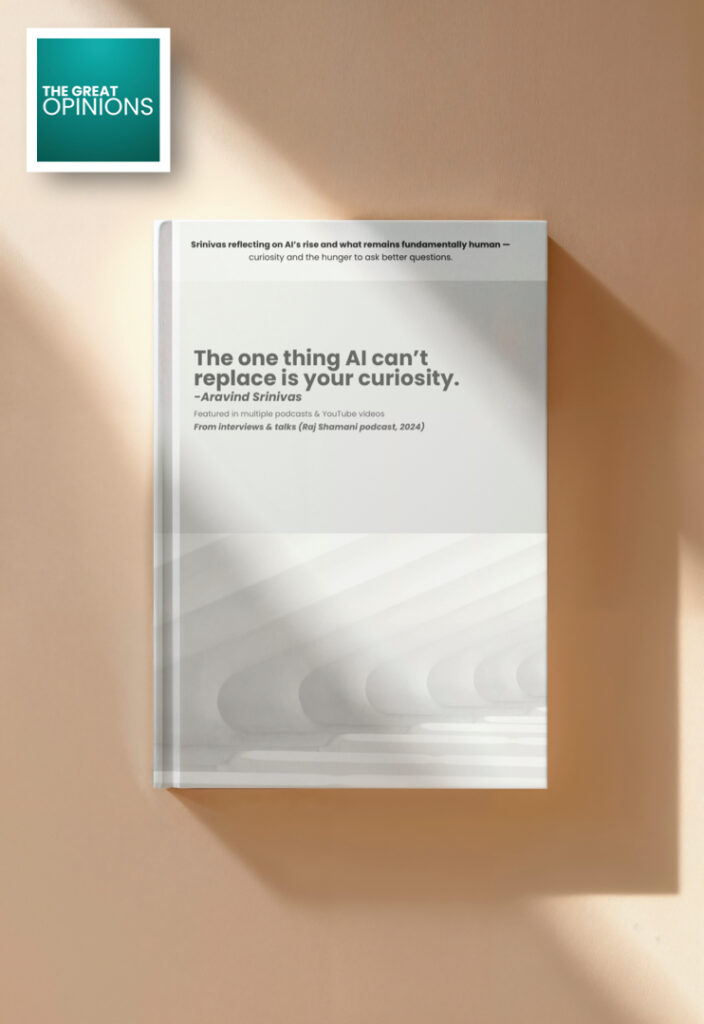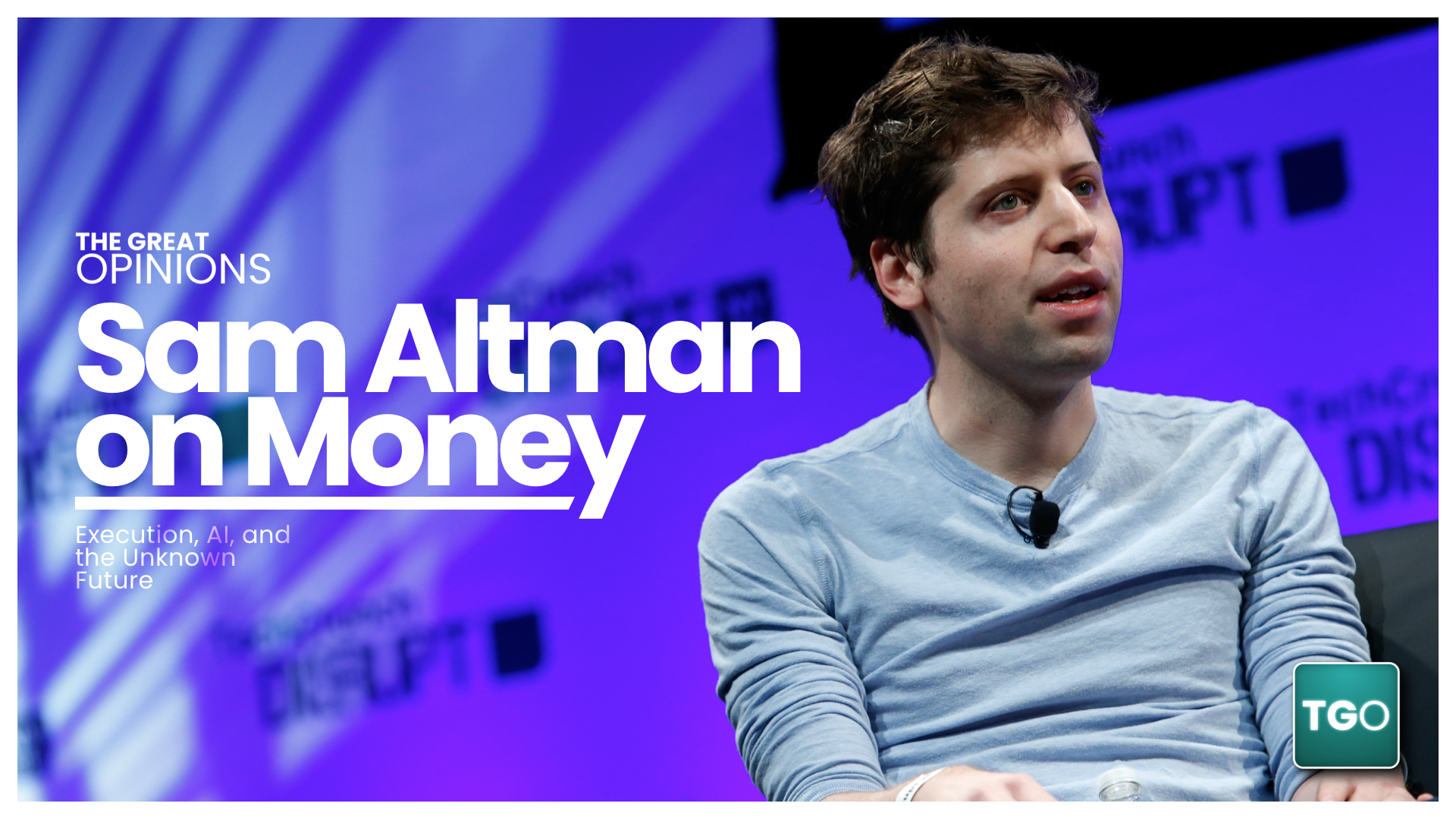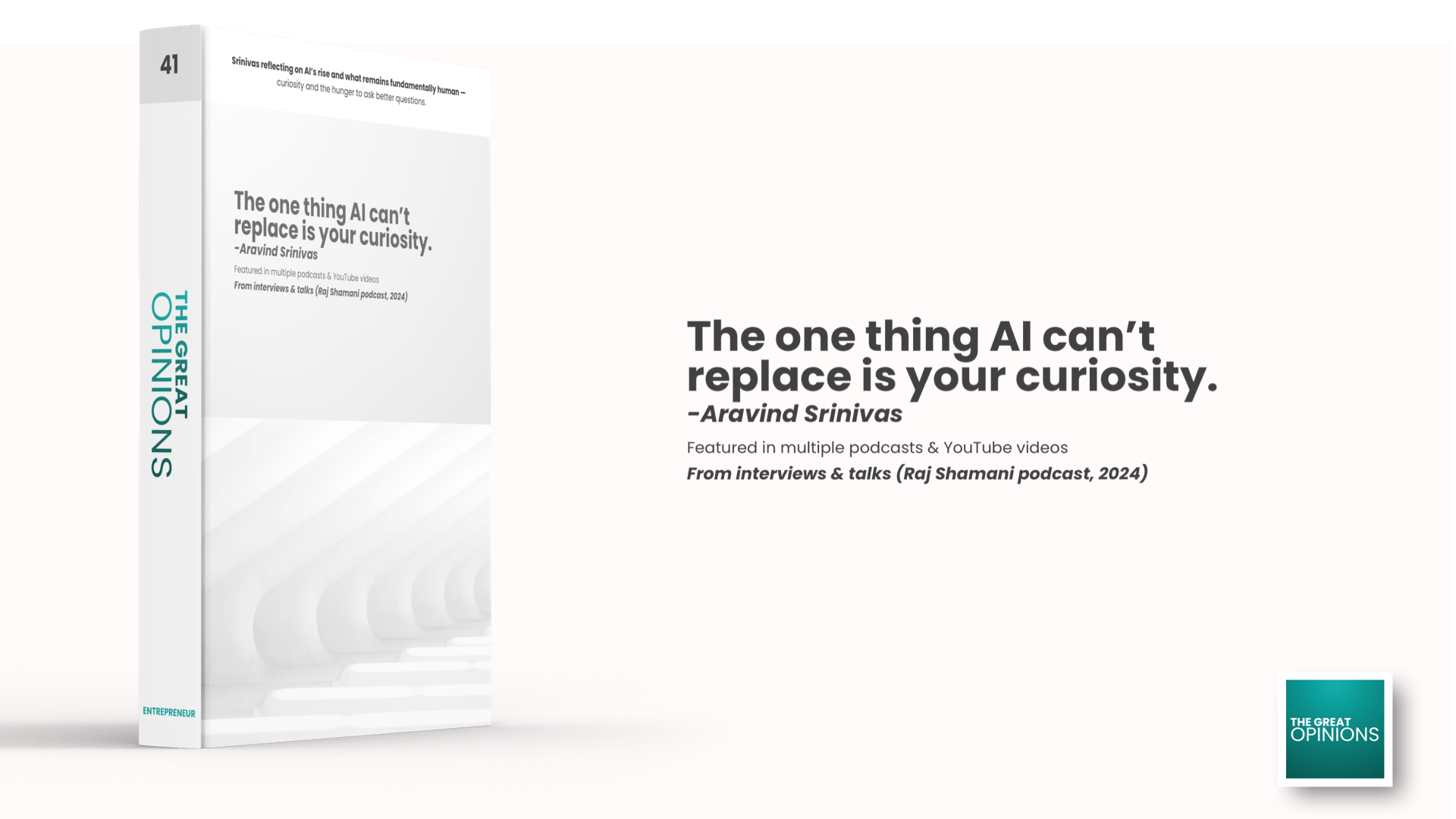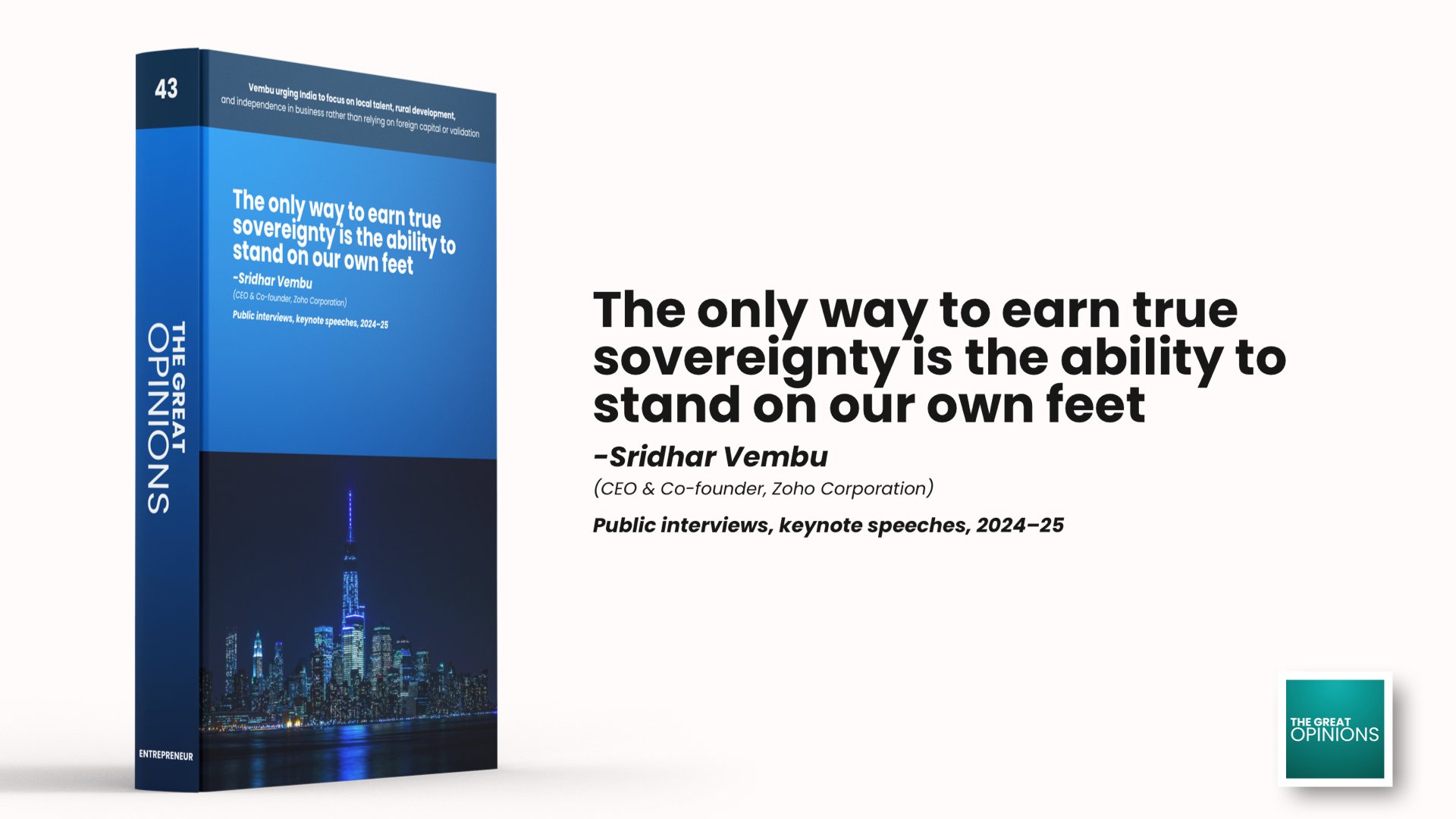Curiosity as the Last Human Advantage
How Srinivas frames curiosity as the only human trait AI cannot replicate, and why asking sharper questions matters more than generating faster answers.
The world is drunk on AI.
Every startup pitch sounds the same: “We’re building the next revolution in intelligence.” Every investor deck has words like “disruption,” “autonomous,” “genius at scale.” But somewhere in this noise, we’ve mistaken tools for teachers.
Bukowski would’ve spat on it. He knew tools don’t save us. Questions do. Curiosity does.
And then comes a line from a quiet man in glasses, standing against the storm:
“The one thing AI can’t replace is your curiosity.”
That’s Aravind Srinivas, the CEO of Perplexity AI.
It’s not a marketing line. It’s a philosophy. It’s a rebellion against the illusion that answers are enough. Srinivas knows answers are cheap — one click, one prompt, one model away. But questions? They cost blood. They demand humility. They demand the hunger to doubt what you know and chase what you don’t.
Bukowski would’ve nodded. He wasn’t a fan of machines, but he loved honesty. And this line is honest: AI can scale answers, but only humans burn to ask.
Picture the scene. Silicon Valley, 2025. Venture capitalists clinking glasses, search giants waging billion-dollar wars. Google and OpenAI fighting for the crown. And in the middle of it, a Chennai-born founder who doesn’t talk like a CEO, doesn’t posture like a prophet. Instead, he frames the problem simply: “Search is broken. Let’s fix it.”
That’s what Perplexity is — not just another search engine, but a rebellion. A conversation interface that cuts ads, cuts clutter, cuts noise. A tool that says: ask better, get clearer.
Srinivas’s journey isn’t a fairy tale. He didn’t inherit wealth. He didn’t coast on legacy. He was the middle-class kid from Chennai who chased questions into IIT Madras, Stanford PhD corridors, OpenAI labs, and finally into the grit of founding Perplexity. His story isn’t about having all the answers. It’s about refusing to stop asking.
And that’s why this essay isn’t just about AI. It’s about money, respect, and legacy in a world obsessed with applause. Because Srinivas doesn’t chase applause. He chases honesty. He chases puzzles. He chases the one thing machines can’t: curiosity.
Now, step into the reel. This isn’t a tech profile. This is a cinematic ledger of Aravind Srinivas’s money story — curiosity turned into a company, uncertainty turned into growth, honesty turned into respect.
| Element | Details |
| Quote | “The one thing AI can’t replace is your curiosity.” |
| Speaker | Aravind Srinivas (CEO & Co-founder, Perplexity AI) |
| Origin / Source | From interviews & talks (Raj Shamani podcast, 2024) |
| Date & Place | 2024–25, public conversations on AI & entrepreneurship |
| Context | Srinivas reflecting on AI’s rise and what remains fundamentally human — curiosity and the hunger to ask better questions. |
Chapter 1: Curiosity as the Last Human Advantage
When Srinivas says AI can’t replace curiosity, it’s not poetry. It’s an observation.
AI can finish your sentence. It can summarize your meeting. It can write you a 500-word essay. But what it can’t do is itch. That restless, sleepless itch to know more, to see differently, to ask “what if?” That itch is curiosity, and it remains the most human of currencies.
In interviews, Srinivas emphasizes this relentlessly. He tells students and young founders: don’t fear AI taking your job. Fear yourself losing curiosity. Because once curiosity dies, you’re a machine too — repeating outputs without hunger.
This philosophy bleeds into Perplexity. The app isn’t built to overwhelm you with data. It’s built to nudge you into asking better. Its design whispers: “Don’t stop here. Go deeper.”
Uncertainty, he insists, is where growth happens. Not knowing forces you to move. Perplexity isn’t about certainty; it’s about engagement. And that’s what makes it powerful: it’s less a machine for answers, more a mirror for your questions.
For Srinivas, curiosity isn’t just resilience. It’s the only moat humans have left.
Chapter 2: From Chennai to Stanford – The Biography
Aravind Srinivas grew up in Chennai in a middle-class family where education was the ultimate currency. His parents valued knowledge not as trivia but as survival. In Chennai’s humid streets, curiosity wasn’t romantic — it was discipline.
At school, Srinivas wasn’t the loudest kid. He wasn’t the debater or the showman. He was the one who asked why. Why does this equation work? Why do systems break? Why does one mind think differently from another?
He cracked his way into IIT Madras, where his curiosity sharpened under India’s toughest academic grind. But instead of chasing placements like peers, Srinivas kept chasing questions. That led him to Stanford University, where he pursued a PhD in computer science, diving into machine learning before it was fashionable.
From Chennai classrooms to Stanford labs, one thread held: curiosity as compass.
Chapter 3: The First Sparks – OpenAI, DeepMind, and Beyond
Before founding Perplexity, Srinivas walked through the hallowed halls of the AI world. He interned and worked with OpenAI and DeepMind, where the brightest minds were building the foundations of modern LLMs.

He wasn’t just a spectator. He contributed to projects, absorbed the culture of asking impossible questions. But he also noticed something troubling: AI research was being hoarded. Locked in labs, guarded by gatekeepers, scaled for profit more than for clarity.
He learned a paradox: the people building intelligence were often making knowledge less accessible. That contradiction gnawed at him.
And that’s when the spark for Perplexity was born: what if you could democratize clarity? What if you could build a search tool that served humans, not advertisers?
Leaving research’s prestige wasn’t easy. But for Srinivas, the hunger to build outweighed the comfort of labs.
Chapter 4: Founding Perplexity AI
By 2022, the world thought search was a solved problem. Google had the crown. Bing trailed behind. Nobody asked if the search itself was broken, Srinivas did.
He saw users drowning in ads, SEO games, and link farms. He saw how asking a question online felt less like inquiry and more like sifting through noise. And he asked: what if the search was conversational? What if answers were direct, clean, transparent?
That’s how Perplexity AI was born.
The early days were chaotic. Investors didn’t get it. “Why take on Google?” they asked. Friends warned him he was crazy. But Srinivas wasn’t chasing markets. He was chasing honesty.
The product spoke for itself. Users discovered it and felt something click: search didn’t have to suck. Within months, Perplexity carved a cult following. By 2024, it was valued in billions, competing head-to-head with giants.
His stake in Perplexity AI made him wealthy on paper. But more than money, it gave him respect. Because he wasn’t building for claps. He was solving.
Chapter 5: Net Worth, Stake, and Forbes Recognition
By 2025, Forbes estimated Aravind Srinivas’s net worth in the hundreds of millions USD, thanks largely to his stake in Perplexity AI.
But Srinivas shrugs at these numbers. He reminds interviewers: money is scoreboard, not meaning. His real wealth is clarity — the fact that millions trust Perplexity to give them honest answers.
The headlines call him “CEO of Perplexity AI.” Forbes calls him “one to watch.” But to him, labels are noise. Respect, as he says, comes from honesty, not applause.
Chapter 6: Portfolio of Ideas and Investments
Srinivas doesn’t hoard wealth. He recycles it into ideas.
His portfolio includes angel investments in startups that mirror his philosophy: solving real problems, not chasing hype. He mentors young founders, asking them the same blunt question: what does your work solve?
Perplexity itself is a portfolio of ideas. Partnerships with publishers. API integrations. Research into multimodal AI. But every expansion carries the same DNA: curiosity-first design.
Unlike others who measure success in exits, Srinivas measures it in clarity created.
Chapter 7: Work Isn’t Separate from Life
Work-life balance is a cliché Srinivas doesn’t buy.
He says: work isn’t separate from life — it’s part of it. If you’re curious, the line vanishes. Your work feeds your questions, and your questions feed your life.
This doesn’t mean burnout. It means alignment. He advises entrepreneurs: don’t chase balance, chase alignment. If your curiosity matches your work, you won’t crave separation.
Uncertainty, he insists, is where growth happens. Embrace it like a puzzle, not a threat. That’s why he treats Perplexity not as a company but as a lifelong puzzle — one that keeps him alive.
Chapter 8: Life Story and Legacy in the Making
From Chennai streets to Forbes lists, Srinivas’s story is still being written.
His biography is a lesson for every middle-class dreamer: pedigree is optional, curiosity is not. His life story is about asking sharper questions when the world is satisfied with easy answers.
Money came as a by-product. Respect came from honesty. Legacy, he knows, will come from curiosity — the culture of questioning he is trying to embed in tech.

If Google taught us to search, maybe Perplexity will teach us to wonder again.
AI can scale answers. But only humans can scale questions.
That’s the paradox Aravind Srinivas embodies. His fortune isn’t just his net worth in USD or his stake in Perplexity AI. It’s the wealth of trust, curiosity, and honesty his work solves.
And maybe that’s the final ledger of money in 2025: not how many claps you earn, but how many questions you keep alive.






